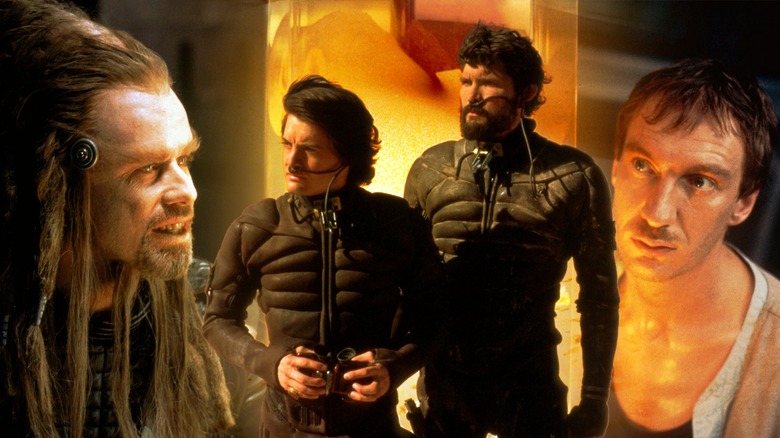
Filmmaking is a collaborative process. Having an original idea is a phenomenal start, but directors need the financial backing of a studio to bring it to life. If that's not all, to get the best results, filmmakers must also choose talent with strong on-screen chemistry or, at the very least, ensure they get along.
The unpredictable nature of life causes things to go awry sometimes. Filmmaking is a business, and one major blunder can be a career-ender. A project can run out of money halfway through shooting because of poor budgeting. Maybe a flick's stars completely misunderstood their roles. Worse yet, audiences may not comprehend a director's vision upon a movie's release.
"A director must be a policeman, a midwife, a psychoanalyst, a sycophant, and a bastard," director Billy Wilder once wisely declared. Perhaps "clairvoyant" should be added to that list, as there's no chance that some of the following fiascos could have been predicted. Let's look at the greatest misfires in movie history.
Battlefield Earth
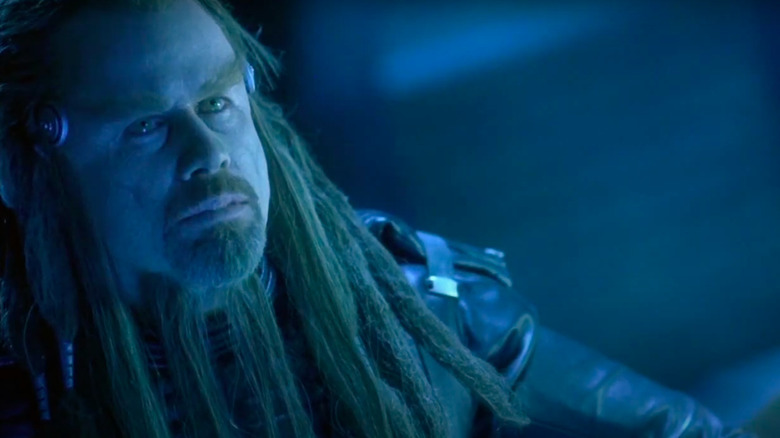
Much has been said about the dumpster fire that is "Battlefield Earth." This 2000 disaster is probably the biggest mistake in sci-fi history -- with a staggering nine Razzies to prove it. Many have wondered how such a movie was even made, but it all comes down to the determination of one man: John Travolta.
"Battlefield Earth" is based on a 1982 science fiction novel by Scientology founder L. Ron Hubbard. Travolta, a Scientologist since 1975, spent over 15 years looking for a studio willing to adapt the book. "I have a special affection for this book," he told The New York Times in 2000, praising Hubbard's writing prowess. "Battlefield Earth" bounced around various studios, including MGM and 20th Century Fox, until finally finding a home at Warner Bros. Pictures. During this time, the script rotated through two different writers: J.D. Shapiro and Corey Mandell. Both Mandell's manager and agent warned him against taking on the project. "I wasn't smart enough to listen," he confessed to Vice.
The movie was released on May 12, 2000, three days after a major Scientology holiday. This only bolstered the flick's religious association. "There is NO connection to Scientology," the film's director, Roger Christian, told Vice. Sure. With a budget of $73 million and a worldwide gross of $30 million, "Battlefield Earth" was a failure. Moreover, it stained Travolta's acting career. "It will be like 'Star Wars,' only better," the actor once boasted (via The Guardian). Spoiler alert: it wasn't.
Breakfast At Tiffany's
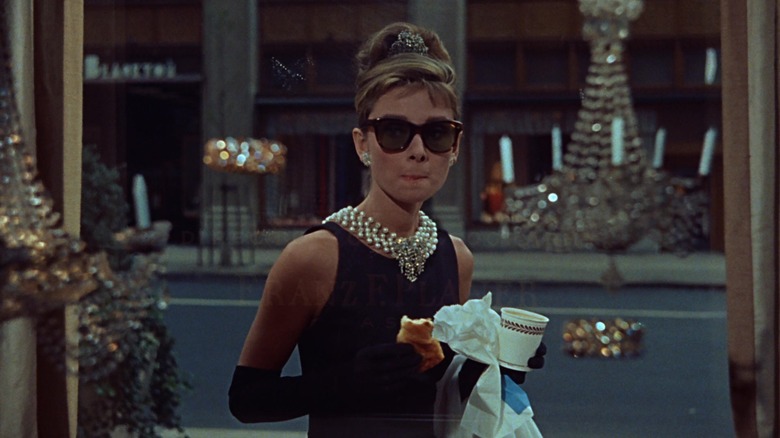
There's much to love about 1961's "Breakfast at Tiffany's." It's the movie that solidified Audrey Hepburn as a pop culture icon. The legendary Henry Mancini composed its dazzling score. It made teenage girls yearn for their own New York brownstone — just so they could sing "Moon River" on a fire escape. Needless to say, this Blake Edwards rom-com is a classic. Unfortunately, it also contains one of Hollywood's biggest misfires.
Those who have seen "Breakfast at Tiffany's" know what we mean. The first time we witness this travesty is early in the movie. When Holly Golightly (Hepburn) heads home one morning, she realizes she's lost her keys. After buzzing her landlord, Mr. Yunioshi (Mickey Rooney), she gains entry — although Yunioshi isn't too happy about the disturbance. This is where things get horrifying. Rooney's portrayal of a Japanese man includes an exaggerated Asian accent, buck teeth, and taped eyelids.
"Blake Edwards, who directed the picture, wanted me to do it because he was a comedy director," Rooney explained to Deseret News in 2008. "They hired me to do this overboard, and we had fun doing it," he added, noting that he hadn't heard a complaint in 40 years. As the new millennium began, protests occurred whenever the film was screened. Eventually, Paramount acknowledged the role as racist. As for Rooney? The actor admitted that he would have passed on the part had he known how offensive it was.
On The Silver Globe
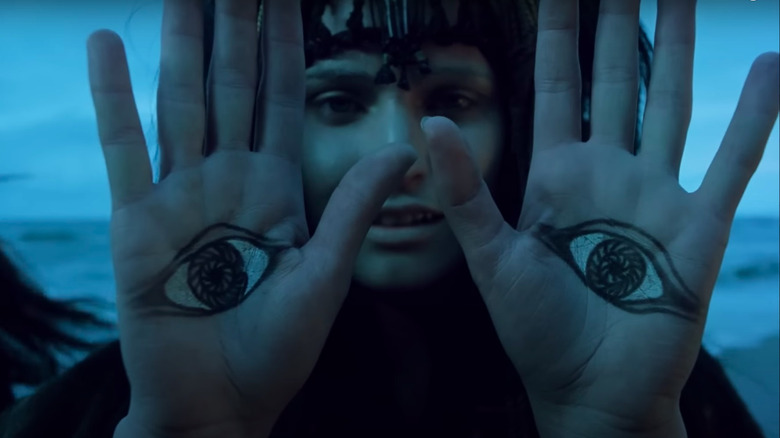
"On the Silver Globe" should have been Andrzej Żuławski's magnum opus. As it stands, it's a phenomenal piece of sci-fi cinema. Surrealist imagery, extravagant costumes, and breathtaking location shots make "On the Silver Globe" striking. So, what went wrong?
Żuławski adapted his epic from "The Lunar Trilogy," a collection of novels written by his great-granduncle in the early 1900s. According to Mubi's Notebook, in the mid-1970s, the Polish government funded his film on the condition that it contained no anti-communist sentiments. After two years of adapting the screenplay, Żuławski finally started shooting "On the Silver Globe." The filmmaker completed four-fifths of the movie using the Gobi Desert, the Caucasus Mountains in Georgia, and the Wieliczka Salt Mines near Kraków as locations for his alien terrain. In 1977, Poland's newly-appointed Vice Minister of Cultural Affairs, Janusz Wilhelmi, abruptly halted production, citing its overly expensive budget.
However, the movie's themes of religion and totalitarian regimes were rumored to agitate Wilhelmi. Consequently, he demanded the film and all props and costumes be destroyed. Disheartened, Żuławski moved to France. A decade later, during the fall of communism in Poland, the director decided to finish the movie. By using bustling images of Poland, Żuławski also adds voiceover narration to further the plot — boldly claiming government censorship is to blame. The Cannes Film Festival premiered "On the Silver Globe" in May 1988. While the movie is choppy, it's also visually stunning. Imagine what a triumph it could have been if Żuławski had finished it properly.
The Island Of Dr. Moreau
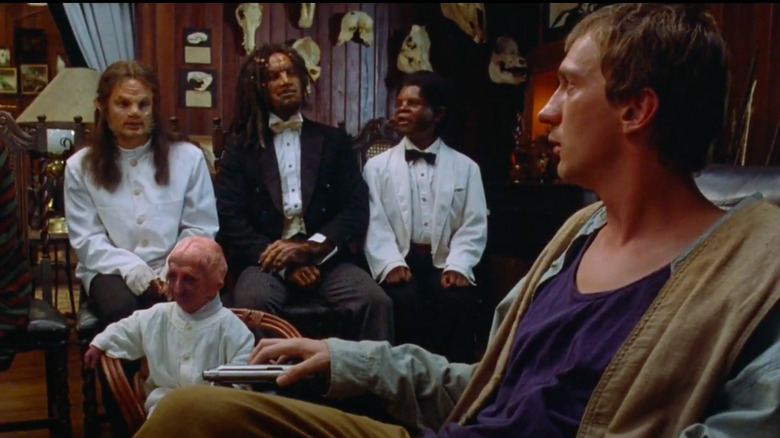
The production of 1996's "The Island of Dr. Moreau" was infamously awful. Director Richard Stanley embarked on a journey to adapt H.G. Wells' 1896 novel after being captivated by it as a child. However, as Stanley told Vice, while he spent too much time bringing Moreau's human-animal hybrids to life, his casting was in shambles. Marlon Brando played Dr. Moreau, but the actor was devastated by the recent death of his daughter. As a result, Brando fled to his own island, showing up to set when he pleased (via Far Out).
Meanwhile, Bruce Willis was slated to play Dr. Montgomery but backed out due to problems in his marriage to Demi Moore. His replacement was Val Kilmer. On set, Kilmer was served divorce papers, triggering his temper. Due to the chaos, Rob Morrow (cast as protagonist Edward Douglas) begged the studio to let him leave, resulting in David Thewlis taking over.
Stanley was fired after a few days on set, and John Frankenheimer, known for handling pompous stars, replaced him. With the script now completely rewritten, Brando refused to learn his lines. He was fitted with a radio ear receiver that fed him his dialogue -- and picked up nearby police transmissions. As Brando recited dispatch calls, Kilmer feuded with Frankenheimer. "I don't like Val Kilmer ... and I don't want to be associated with him ever again," the director declared to Entertainment Weekly after filming wrapped. "The Island of Dr. Moreau" was released in August 1996 and was an abysmal mess. Funny enough, Stanley got the last laugh. The director was on set the entire time, going incognito as a mutant extra and witnessing the bedlam. "I did it out of morbid curiosity," he shared with Vice.
Cleopatra (1963)
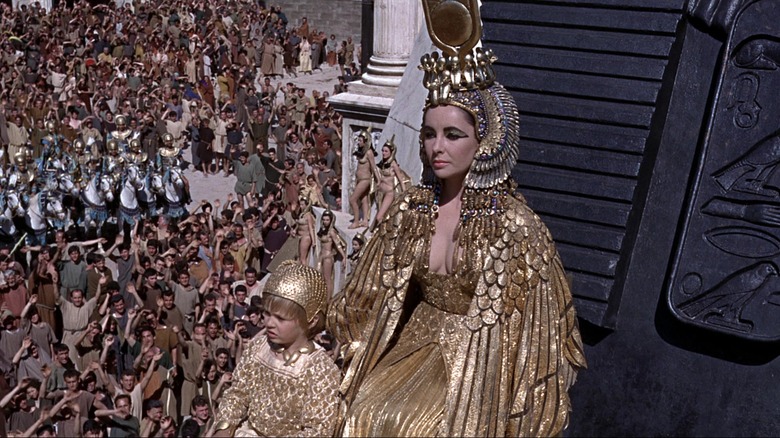
The visual decadence of 1963's "Cleopatra" perfectly represents Hollywood's Golden Age. That said, it also contributed to the era's demise. Joseph L. Mankiewicz's historical drama was the most expensive film of its time. It cost $44 million to make — over $360 million today after inflation (via Den of Geek). Consequently, 20th Century Fox almost went bankrupt.
The studio system changed as television gained popularity, and "Cleopatra" was supposed to be Fox's salvation. One former Fox publicist shared with Vanity Fair, "We were the only people who could put John Wayne, Elvis Presley, and Marilyn Monroe in movies and not have them do any business." Having seen Cecil B. DeMille's 1934 version of "Cleopatra," producer Walter Wanger salivated at the prospect of remaking it. With a budget of $5 million and Elizabeth Taylor cast as the lead, things seemed to be moving along. The catch? Taylor demanded $1 million — and became Tinseltown's first leading lady to secure it.
Taylor's addition spelled disaster. She demanded that "Cleopatra" be shot internationally, which was costly. A studio backlot in London was ultimately chosen. Authentic? No, but at least Fox saved some money. Production stalled after rain ruined the set, and Taylor was bedridden with pneumonia. Moreover, director Rouben Mamoulian was fired. Los Angeles Times reports that filming then moved to Rome, requiring brand new sets. Mamoulian was replaced by Mankiewicz, who also rewrote the script. Amid a budget overrun, Mankiewicz was stressed. To stay afloat, Fox sold nearly 300 acres of its Los Angeles backlot. Sadly, as Mankiewicz's son told the Los Angeles Times, the completed film failed to live up to his father's vision.
Dune (1984)
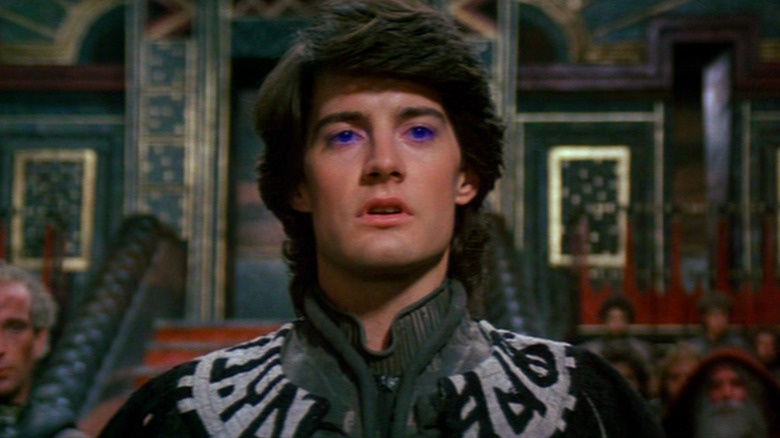
Despite our love for David Lynch, his 1984 adaptation of "Dune" is a dud. Yet, we don't entirely blame him. Lynch's interpretation is unfairly compared to Denis Villeneuve's 2021 version. After all, Villeneuve was allowed to split his epic into two parts.
As a fan of Frank Herbert's novel, Lynch jumped at the chance to adapt "Dune." Wanting to infuse the story with his trademark surrealism, Lynch painstakingly wrote seven drafts of the script. When shooting began, things spiraled out of control.
Like Villeneuve's adaptation, Lynch's "Dune" was initially planned as a two-part film. This opportunity was snatched from Lynch. "My real problem is still squeezing 'Dune' into the length of an ordinary movie," he told The New York Times in 1983. Production costs escalated while filming in Mexico City, including the need for 900 crew members and 70 sets. Some special effects look incredible, thanks to the Oscar-winning professionals behind the scenes. Others, not so much. According to the New York Post, in three and a half years, the making of "Dune" exceeded its $40 million budget, significantly reducing those special effects. In addition, Lynch had to condense his two-part saga into 137 minutes. The result was confounding. In an interview years later, the filmmaker dubbed his movie a "big failure," adding, "That's the big lesson. Don't make a film if it can't be the film you want to make. It's a joke and a sick joke, and it'll kill you."
Death Proof
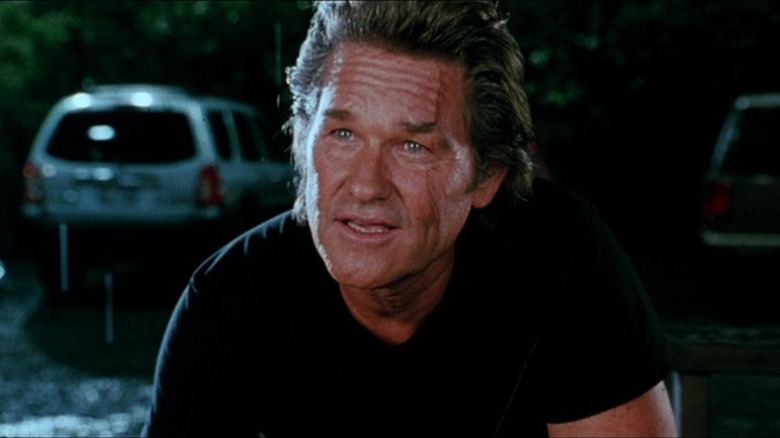
"Death Proof," Quentin Tarantino's catastrophic exploitation throwback, teaches us that not everyone understands cinema history. Although We love the flick, this self-aware action-comedy is often regarded as Tarantino's worst. As part of the 2007 "Grindhouse" double feature with Robert Rodriguez, "Death Proof" pays homage to classic exploitation movies of the 1970s — to a fault.
It's no secret that Tarantino adores this genre. He even compiled a list of his favorites for Grindhouse Cinema Database and regularly discusses exploitation cinema on "The Video Archives," his podcast with Roger Avary. According to The Telegraph, Rodriguez expressed interest in making a double feature after spotting a poster for a 1957 double bill at Tarantino's pad. The project was born then and there. Both filmmakers intentionally included "missing reels" in their movies to keep things authentic. They also employed prolific horror directors, including Rob Zombie and Eli Roth, to create fake B-movie trailers to run during the "intermission." Reuters reports that the estimated final cost of "Grindhouse" was $67 million. Domestically, it only grossed $25 million.
"[Audiences] had no idea what the f**k they were watching," Tarantino explained to Empire, adding that he and Rodriguez overestimated their fans' understanding of exploitation cinema. The Weinstein Company released both flicks separately overseas to prevent a repeat of the financial flop. Ironically, this only agitated B-movie sticklers expecting a legitimate double-feature experience.
Showgirls
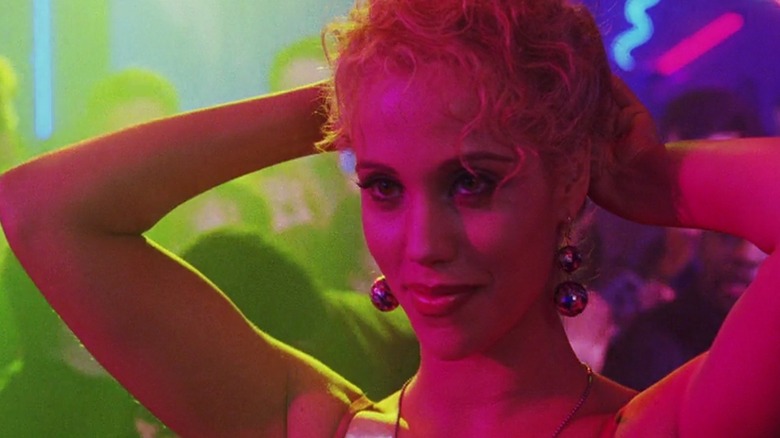
Paul Verhoeven's 1995 sleaze fest, "Showgirls," still divides viewers. Upon release, "Showgirls" was panned by audiences and critics alike as superficial, clunky, and misogynistic. The lap dance drama grossed $20 million worldwide on a $45 million budget. Clearly, it tanked.
"Showgirls" raised eyebrows partly because of Elizabeth Berkley's leading role. Before then, Berkley played Jessie Spano, a square-toed high schooler on "Saved by the Bell." Her most "controversial" on-screen moment was when Jessie spiraled into a caffeine pill addiction. From caffeine cravings to the full-frontal nudity we see in "Showgirls," that's quite a leap. Couple that with her ludicrously over-the-top performance and Hollywood suddenly ostracized Berkley. It wasn't until 2015 that Verhoeven publicly apologized to the star and defended her. "If somebody has to be blamed, it should be me," he told Daily News. "I asked Elizabeth to do all that — to be abrupt and to act in that way, but people have been attacking her about ... that ever since."
Still, some people have defended Verhoeven's homage to Sin City. In 1996, midnight movie audiences hailed it as a camp classic. "You Don't Nomi," a documentary chronicling the film's rise from a flop to a beloved cult hit, was released in 2019. Love it or hate it, "Showgirls" is shameless and unabashedly ridiculous.
The Conqueror
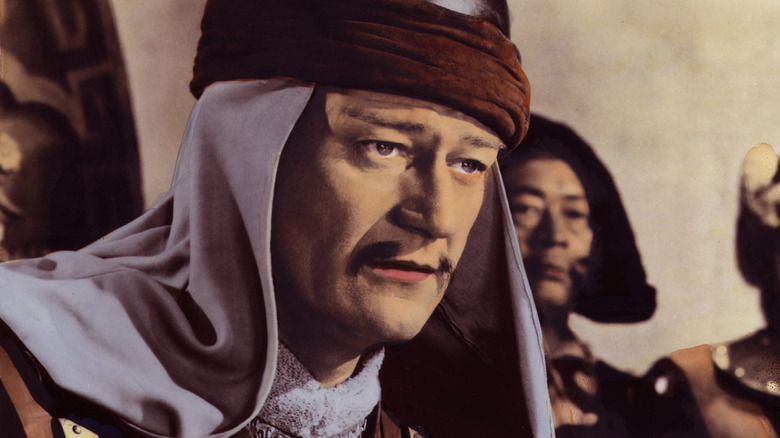
Misfires in 1956's "The Conqueror" abound. In this historical epic, John Wayne plays Genghis Khan, complete with yellowface makeup and a Fu Manchu mustache. The visuals are alarming, and the script isn't much better. In "The Conqueror," choppy, confusing dialogue is used to signify non-English speakers. The result would be laughable, if not so blatantly offensive.
Following a string of flops, RKO Pictures was on thin ice in the early 1950s. In 1948, Howard Hughes, who acquired RKO, desperately needed a hit. At the time, sprawling epics were popular at the box office, so the producer decided to make his own. Since Wayne was still signed to RKO, Hughes had little trouble snagging him. According to The Guardian, Dick Powell, looking for a sizable paycheck, came on board as director.
Wayne and Powell's decisions proved fatal — literally. The atomic testing range at Yucca Flat, Nevada, was just 137 miles from Saint George, Utah, where "The Conqueror" was shot. Per Production Hub, the previous year, 250 kilotons of nuclear weapons were detonated at Yucca Flat, releasing 35,000 kilocuries of radioactive iodine. Federal authorities declared the testing safe, leaving Powell's team unfazed. Unsurprisingly, of the 220 cast and crew members, 91 developed cancer, and 46 died — including Powell and Wayne. The film earned almost $12 million at the box office, but its notoriety haunted Hughes. In his old age, he reportedly watched "The Conqueror" relentlessly after purchasing all of the remaining copies, perhaps in an attempt to shield someone from the catastrophe.
Read this next: Movies That Flopped So Hard They Practically Put Studios Out Of Business
The post The Greatest Misfires In Movie History appeared first on /Film.
0 Comments